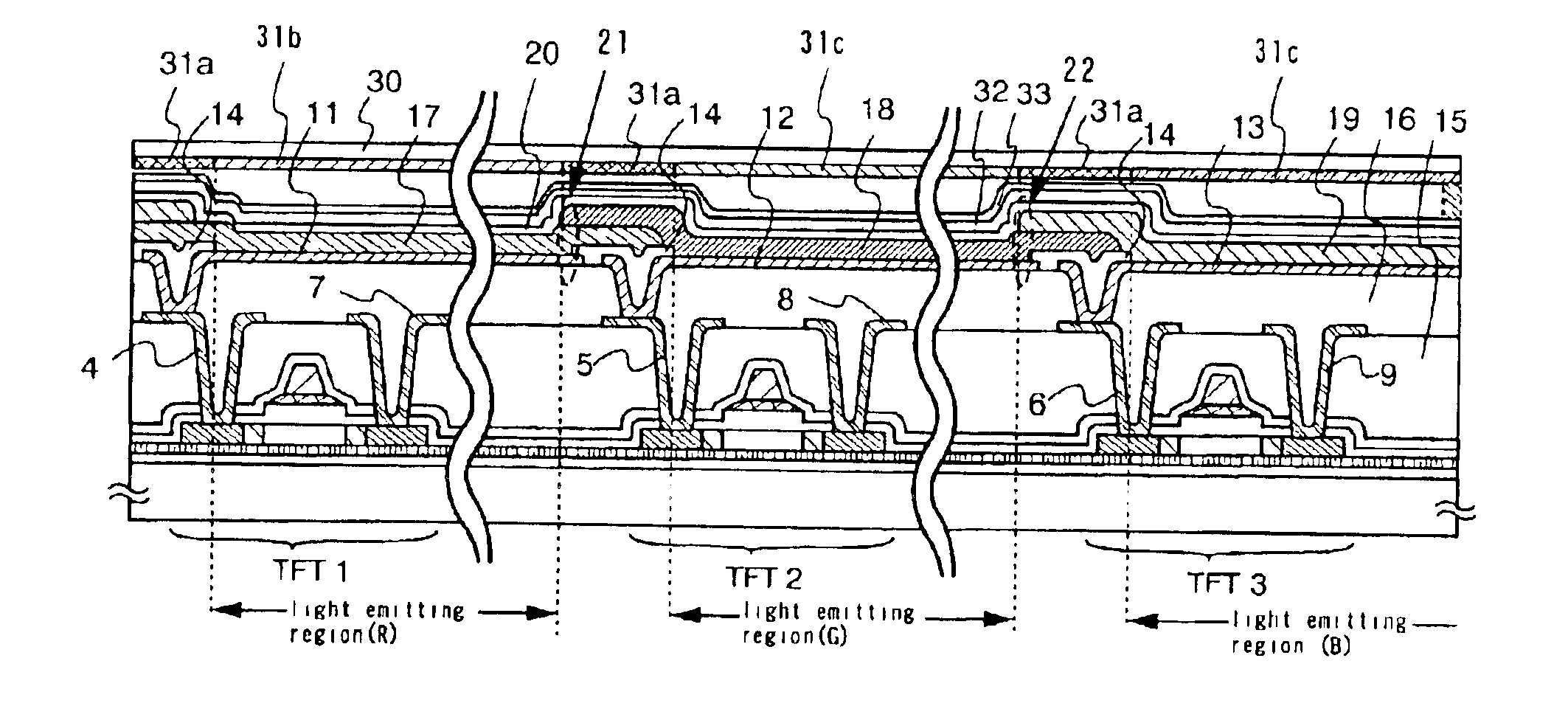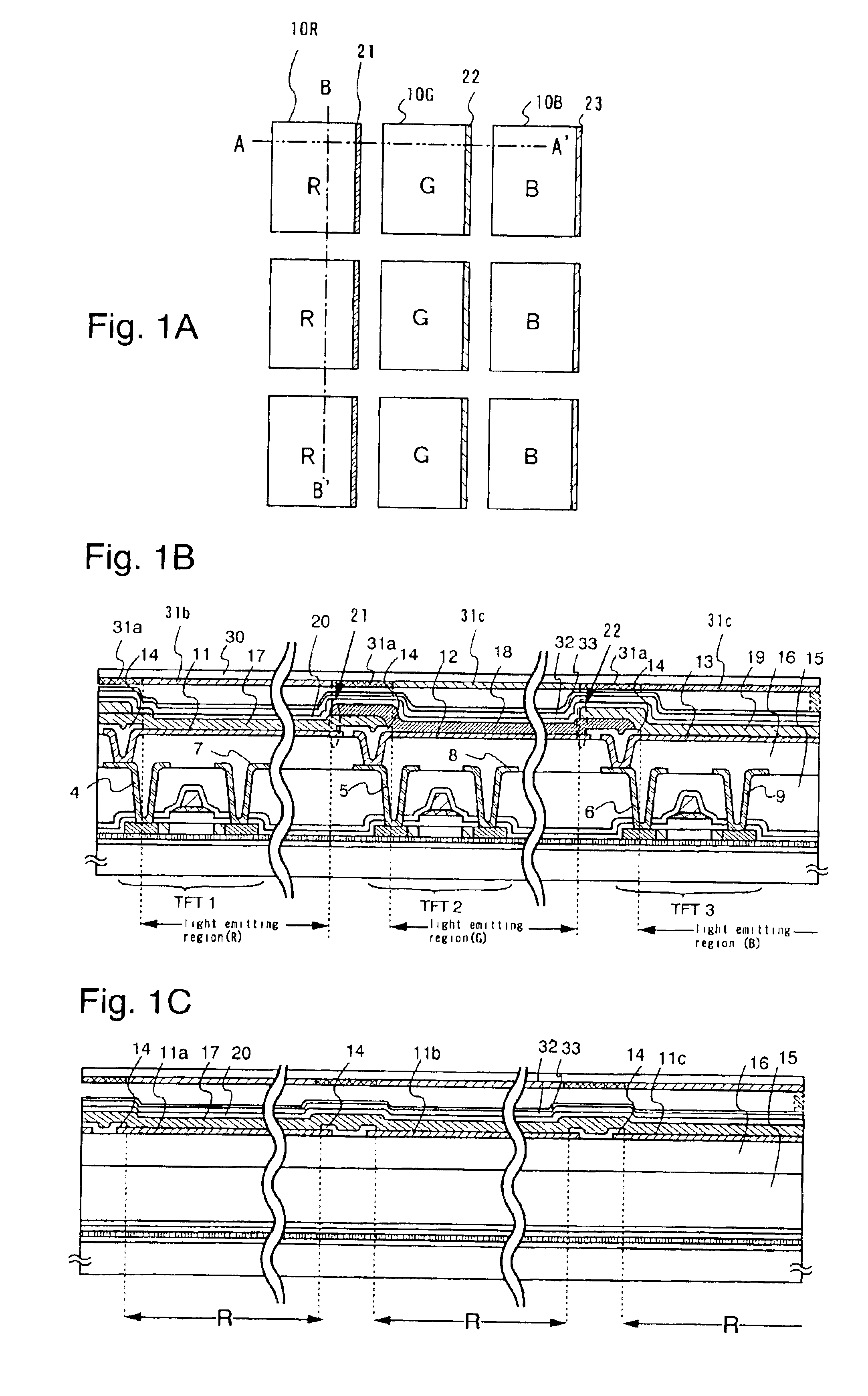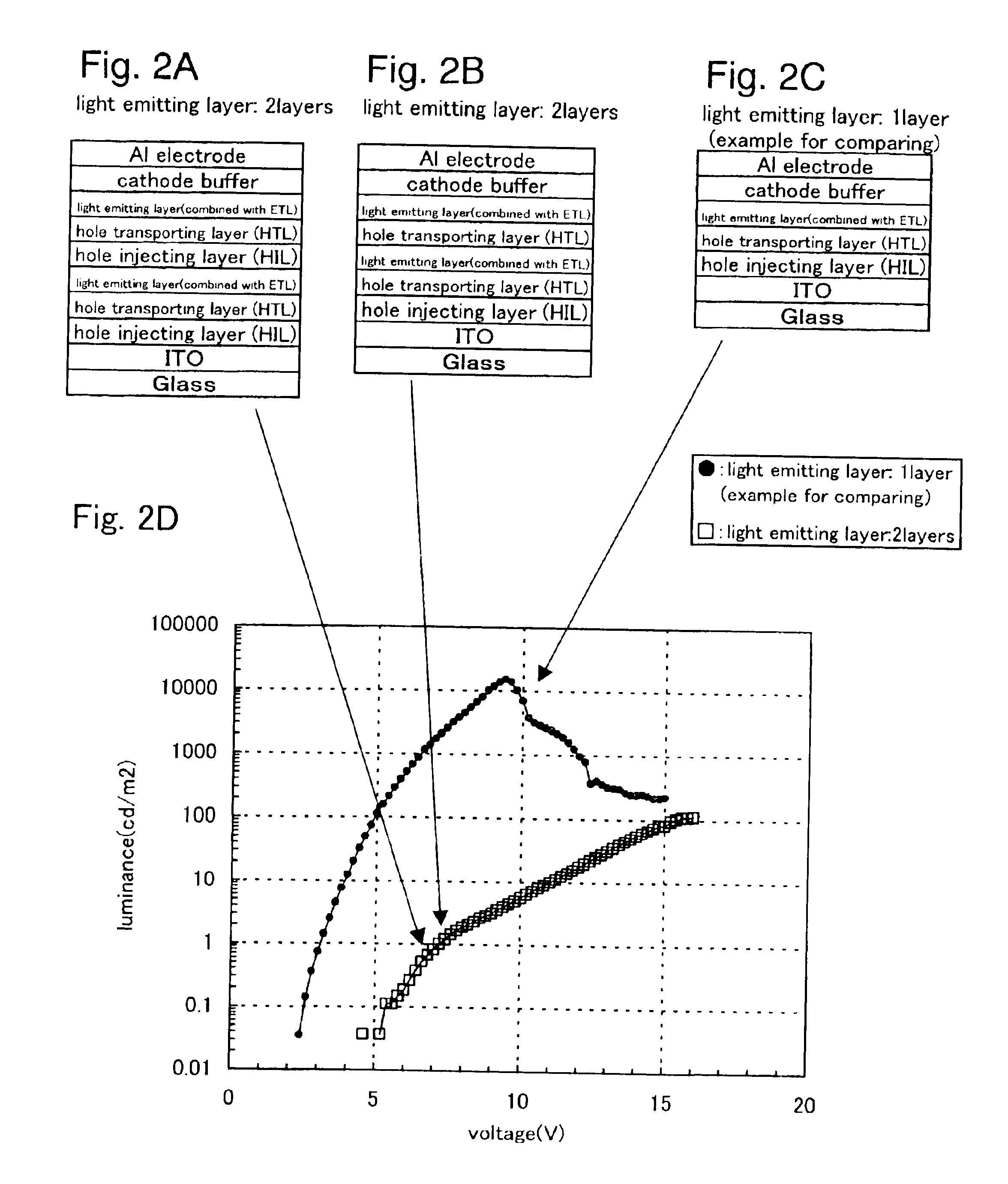Light emitting device, method of manufacturing the same, and manufacturing apparatus therefor
a technology manufacturing method, which is applied in the direction of thermoelectric device, organic semiconductor device, discharge tube luminescnet screen, etc., can solve the problems of extremely high cost of circularly polarizing film, low film formation precision, and large size of light emitting devi
- Summary
- Abstract
- Description
- Claims
- Application Information
AI Technical Summary
Benefits of technology
Problems solved by technology
Method used
Image
Examples
embodiment mode 1
The present invention is explained below by an example of a 3.times.3 section of pixels from among many pixels disposed regularly in a pixel portion.
FIG. 1A is a top view. In FIG. 1A, a light emitting region 10R is a red color light emitting region, a light emitting region 10G is a green color light emitting region, and a light emitting region 10B is a blue color light emitting region. A full color light emitting device is achieved by the light emitting regions of the three colors.
Further, FIG. 1B is a cross sectional view of FIG. 1A sectioned along a dashed line segment A-A'. In the present invention, a portion of a red color light emitting EL layer 17 (for example, an EL layer in which Nile Red, a red color luminescent pigment is added to Alq.sub.3) overlaps with a portion of a green color light emitting element 18 (for example, an EL layer in which DMQd (dimethyl quinacridone) is added to Alq.sub.3), forming a laminate portion 21, as shown in FIG. 1B. Further, a portion of the gr...
embodiment mode 2
A buffer layer and a protective film are explained here using FIGS. 5A and 5B.
FIG. 5A is a schematic diagram showing an example of a laminate structure for a case in which light is emitted in the direction of an arrow within the figure. In FIG. 5A, reference numeral 200 denotes a cathode (or an anode), reference numeral 201 denotes an EL layer, reference numeral 202 denotes an anode (or a cathode), reference numeral 203 denotes a stress relieving layer (buffer layer), and reference numeral 204 denotes a protective film. A material having light transmitting characteristics, an extremely thin metallic film, or a laminate thereof is used as the electrode 202 when light is emitted in the direction of the arrow in FIG. 5A.
The protective film 204 uses an insulating film obtained by sputtering and having silicon nitride or silicon oxynitride as its main constituent. A silicon nitride film can be obtained provided that the protective film is formed using a silicon target under an atmosphere...
embodiment 1
In this embodiment, an active matrix type light emitting device manufactured on an insulating film will be described. FIG. 6 is a cross sectional view of the active matrix type light emitting device. As an active element, a thin film transistor (hereafter referred to as TFT) is used here, a MOS transistor may also be used.
A top gate TFT (specifically a planar TFT) is shown as an example, a bottom gate TFT (typically inversely staggered TFT) may also be used.
In this embodiment, a substrate 800 is used, which is made of barium borosilicate glass or alumino borosilicate glass, a quartz substrate, a silicon substrate, a metal substrate, or stainless substrate forming an insulating film on the surface may be used. A plastic substrate having heat resistance enduring a treatment temperature of this embodiment also may be used, and further a flexible substrate may be used.
Next, a silicon oxynitride film is formed as a lower layer 801 of a base insulating film on a heat-resistant glass subst...
PUM
 Login to View More
Login to View More Abstract
Description
Claims
Application Information
 Login to View More
Login to View More - R&D
- Intellectual Property
- Life Sciences
- Materials
- Tech Scout
- Unparalleled Data Quality
- Higher Quality Content
- 60% Fewer Hallucinations
Browse by: Latest US Patents, China's latest patents, Technical Efficacy Thesaurus, Application Domain, Technology Topic, Popular Technical Reports.
© 2025 PatSnap. All rights reserved.Legal|Privacy policy|Modern Slavery Act Transparency Statement|Sitemap|About US| Contact US: help@patsnap.com



